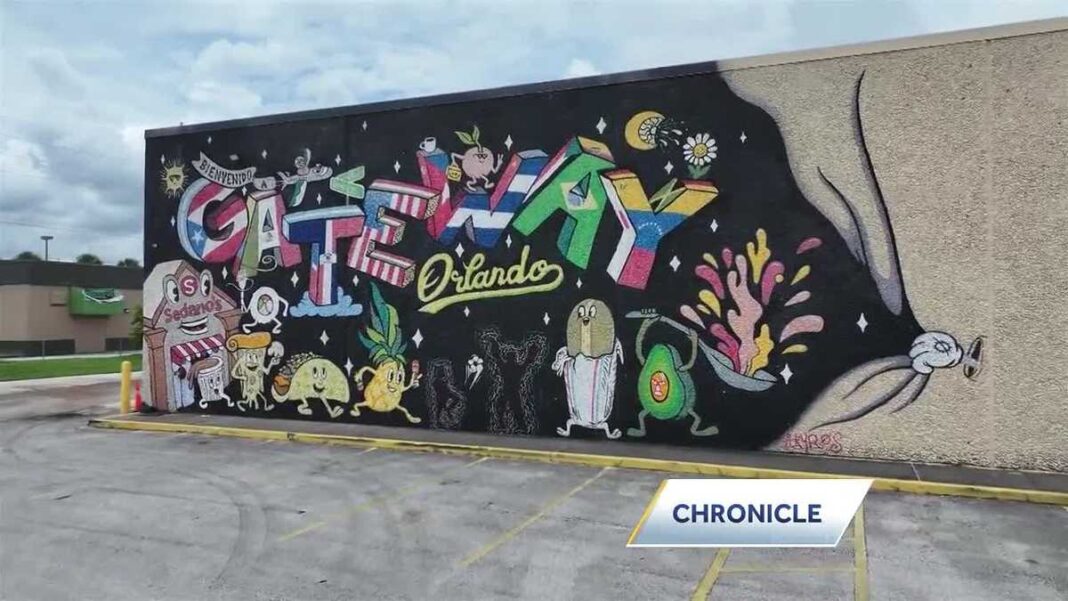Exploring Orlando: A Journey Through Four Iconic Neighborhoods
Orlando, Florida, is more than just a destination for theme parks and sunshine; it’s a city rich with history and culture manifested through its diverse neighborhoods. Home to 115 unique enclaves, each reflects the multifaceted nature of this vibrant city. Let’s take a stroll through four iconic neighborhoods, each showcasing the character and community spirit that make Orlando truly special.
Parramore: A Legacy of Resilience
Parramore stands as the oldest and largest African American neighborhood in Orlando, with roots tracing back to the 1800s. Founded by James B. Parramore, the 14th mayor of Orlando, this neighborhood was originally envisioned as a safe haven for Black Americans during the era of segregation.
In its heyday, Parramore thrived with black churches, businesses, and families creating a strong community fabric. Despite the challenges of modernization, efforts are being made to preserve Parramore’s historical significance amidst rapid development.
Cultural landmarks are vital in keeping Parramore’s rich history alive. The Wells Built Hotel, once a sanctuary for African American performers, now serves as a museum housing civil rights memorabilia. Similarly, the Dr. J.B. Callahan building, once home to the original segregated Jones High School, now acts as a community center where future generations can connect with their history.
Longtime residents like J. Henry, who has operated a barbershop in the neighborhood for over 30 years, reflect on the changes. He expresses a bittersweet nostalgia for the past, remarking, “Some of the tradition is gone… A lot of the old buildings are gone.” However, Henry recognizes the need for adaptability: “If you don’t change with the change, won’t nothing change for you?”
With modern developments sprouting alongside historic sites, the vision for Parramore remains clear: to nurture a thriving community that respects its roots while embracing progress. Artwork and events aimed at celebrating Parramore’s cultural heritage are crucial in fostering equity and pride among its residents.
Gateway District: A Cultural Crossroads
Stretching from Lake Underhill to the airport, the Gateway District serves as an inviting threshold for tourists and a bustling hub for local residents alike. This neighborhood is a melting pot of cultures, underlined by the words of district executive director Amil Cordova, who states, “We are pretty much the gateway to tourists coming into Orlando.”
Historically, the area transitioned from orange groves to a vibrant community filled with a mix of big franchises and family-owned businesses, like High Tide Harry’s. Brennan Heretick, a third-generation owner, treasures the bonds formed with customers over the years, stating, “We’ve been able to meet three generations… It’s an honor.”
With an eye on rejuvenation, the community has launched initiatives to enhance the area. Over 100 new trees have been planted, local artist banners adorn the streets, and murals, such as the bold design at Sedano’s Supermarket, brighten the district. Plans for safer roads, walkable neighborhoods, and better transit options are also underway, aiming to create an all-encompassing environment where residents and visitors can find everything they need within their community.
In the Gateway District, a strong sense of community prevails as local businesses thrive. The district’s small-town charm is complemented by hidden gems like La Costa Wetlands and Park of the Americas, offering spaces for both relaxation and connection.
College Park: Nostalgic Roots and Modern Flavors
Despite its name, College Park harbors no college; rather, it draws its playful name from streets named after prestigious universities in an effort to market the area in the 1920s. Developer Walter Rose opened the door for this charming neighborhood, which has evolved from orange groves to thriving homes and businesses.
Gabriel’s Sub Shop, a staple owned by the Gabriel family for generations, embodies the community’s spirit. Kyle Gabriel recalls how his family has served the public since 1959, emphasizing the comfort of tradition: “That’s like the best compliment… when these subs taste just like they did when your grandfather had it.”
Throughout College Park, stories of notable residents, including astronauts and writers, serve to deepen the neighborhood’s rich heritage. This area flourished in the 1920s with a building boom and the blossoming of small businesses along Edgewater Drive, many of which still stand today.
Yet, College Park continues to evolve, welcoming new families and preserving its history, making it a harmonious blend of past and present.
Milk District: Innovation Meets Tradition
Perched just east of downtown, the Milk District derives its name from the T.G. Lee Dairy, founded in 1925 by Thomas Gilbert Lee. The dairy remains a community cornerstone, producing an impressive 1.2 to 1.4 million gallons of milk each week. Chris Sellers, who now oversees operations, proudly shares the legacy of family involvement: “I just remember him leaving at two in the morning.”
Today, the Milk District is recognized as a cultural hub, boasting a vibrant mix of institutions and newer businesses. From beloved restaurants like Beefy King to yoga studios and pet grooming salons, the district reflects the evolving tastes of its residents.
With numerous murals and public artwork dotting the landscape, the Milk District also showcases a unique blend of innovation and tradition. Its community thrives through collaboration, with businesses supporting one another to create a lively atmosphere.
As the neighborhood continues to grow, it stands as a testament to how history and community can intertwine beautifully within an ever-changing urban landscape.
Each neighborhood in Orlando tells a story, rich with history, culture, and the enduring spirit of its residents. From the resilience of Parramore to the innovation of the Milk District, these neighborhoods collectively create the vibrant tapestry that is Orlando’s cultural identity, continually celebrating its past while looking toward a bright future.



